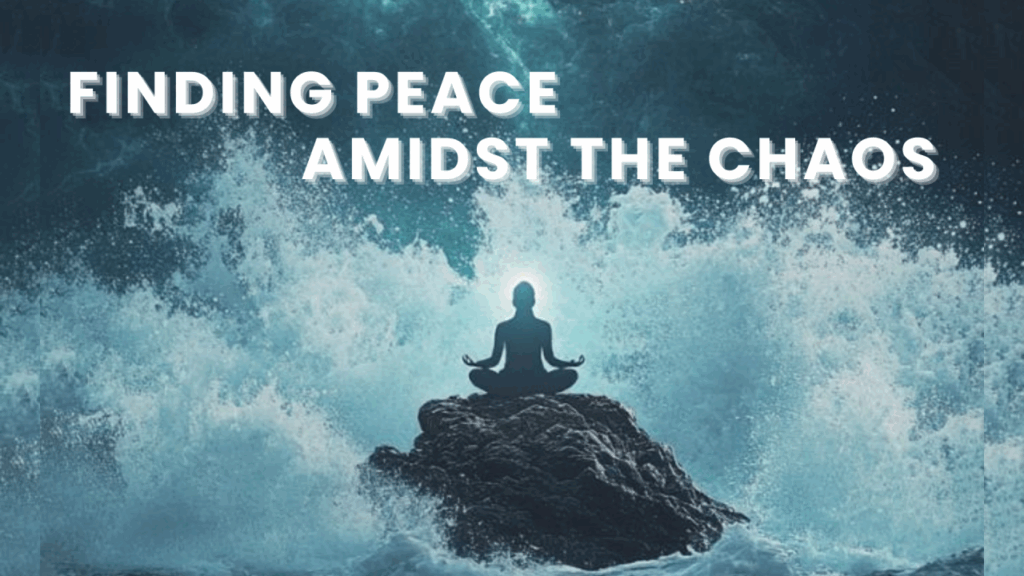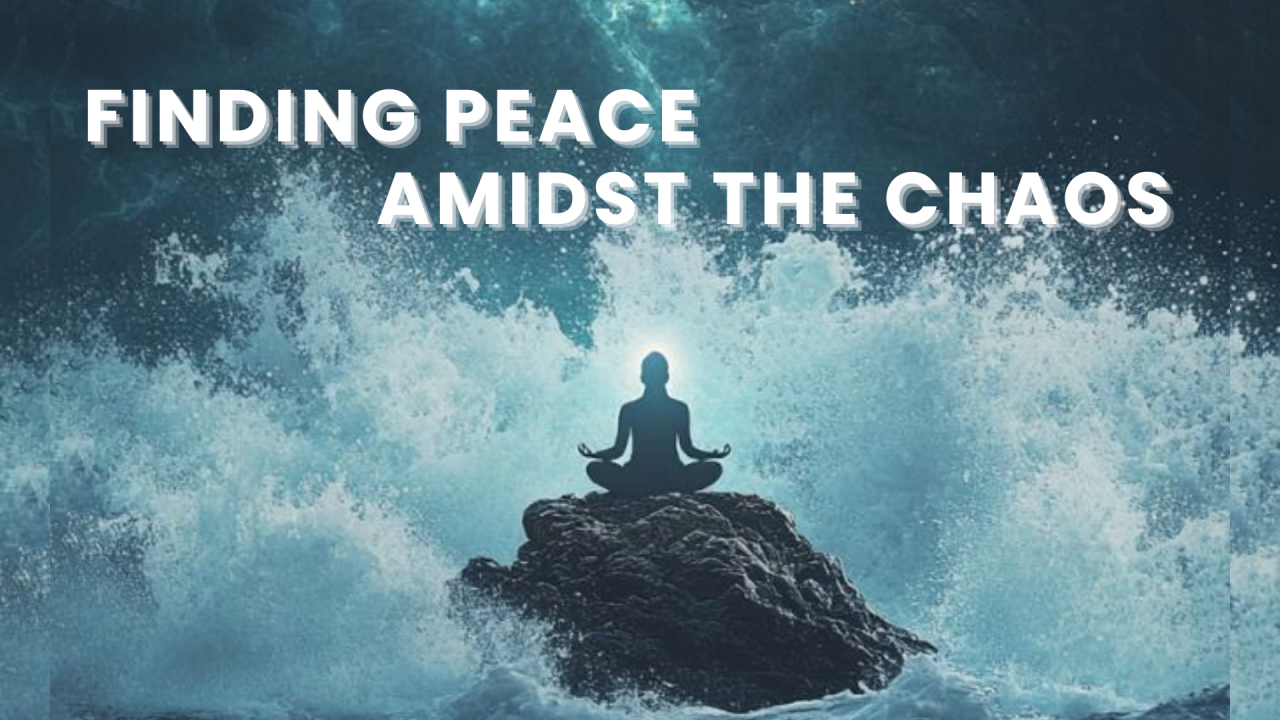
Finding Calm During Chaos: Strategies for Maintaining Composure
In today’s fast-paced and often unpredictable world, the ability to remain calm during chaos is an invaluable skill. Whether facing a professional crisis, a personal setback, or simply navigating the daily grind, maintaining composure can significantly impact our well-being and our ability to make sound decisions. This article explores practical strategies for cultivating inner peace and navigating turbulent times with grace and resilience.
Understanding the Nature of Chaos
Chaos, by definition, is a state of complete disorder and confusion. It can manifest in various forms, from unexpected emergencies and stressful work environments to personal relationship challenges and global uncertainties. Understanding the root causes of our reactions to chaos is the first step toward managing them effectively. Often, our emotional responses stem from a perceived lack of control, fear of the unknown, or the pressure to perform under duress.
Recognizing the triggers that lead to feelings of anxiety and overwhelm allows us to proactively develop coping mechanisms. This awareness empowers us to respond thoughtfully rather than react impulsively when faced with chaotic situations. [See also: The Science of Stress and Its Impact on Performance]
Practical Strategies for Cultivating Calm
Mindfulness and Meditation
Mindfulness, the practice of paying attention to the present moment without judgment, is a powerful tool for finding calm during chaos. Regular meditation, even for just a few minutes each day, can train the mind to focus on the here and now, reducing the tendency to dwell on past events or future anxieties. By observing our thoughts and emotions without getting swept away by them, we can create a sense of inner space and detachment, allowing us to respond more calmly and rationally to stressful situations.
Simple mindfulness exercises, such as focusing on your breath or observing the sensations in your body, can be practiced anytime, anywhere. These techniques help anchor us in the present moment, providing a sense of stability amidst the storm.
Breathing Techniques
Our breath is a direct link to our nervous system, and controlling our breathing can have a profound impact on our state of mind. When we feel anxious or stressed, our breathing often becomes shallow and rapid, exacerbating feelings of panic. Consciously slowing down and deepening our breath can activate the parasympathetic nervous system, which promotes relaxation and reduces stress hormones.
Techniques such as diaphragmatic breathing (belly breathing) and box breathing (inhaling for four seconds, holding for four seconds, exhaling for four seconds, and holding for four seconds) are simple yet effective ways to calm the mind and body in moments of chaos. Practicing these techniques regularly can make them more accessible and effective when you need them most.
Physical Exercise
Physical activity is a well-known stress reliever. Exercise releases endorphins, which have mood-boosting effects and can help to reduce feelings of anxiety and depression. Regular exercise can also improve sleep quality, which is essential for maintaining emotional resilience. Whether it’s a brisk walk, a gym workout, or a yoga session, finding an activity you enjoy and incorporating it into your routine can significantly enhance your ability to stay calm during chaos.
Even short bursts of physical activity, such as taking a quick walk around the block or doing some stretching exercises at your desk, can provide immediate relief from stress and tension.
Setting Boundaries
Often, chaos stems from feeling overwhelmed by external demands and expectations. Learning to set healthy boundaries is crucial for protecting your time, energy, and mental well-being. This involves saying no to requests that overextend you, delegating tasks when possible, and prioritizing your own needs. By establishing clear boundaries, you can create a sense of control over your environment and reduce the likelihood of feeling overwhelmed.
Communicating your boundaries assertively and respectfully is key. Explain your limitations and offer alternative solutions when possible. Remember that setting boundaries is not selfish; it’s a necessary act of self-care that allows you to function effectively and maintain calm during chaos.
Cognitive Reframing
Our thoughts have a powerful influence on our emotions and behaviors. Cognitive reframing is a technique that involves challenging negative or unhelpful thought patterns and replacing them with more positive and realistic ones. When faced with a chaotic situation, it’s easy to fall into the trap of catastrophizing or focusing on the worst-case scenario.
By consciously questioning these thoughts and looking for alternative perspectives, we can reduce our anxiety and regain a sense of control. Ask yourself: Is this thought based on facts or assumptions? What is the evidence for and against this thought? What is the most likely outcome? By reframing your thoughts, you can shift your emotional response and approach the situation with greater calm and clarity.
Seeking Support
No one is meant to navigate life’s challenges alone. Building a strong support network of friends, family, or colleagues can provide invaluable emotional support during times of chaos. Talking to someone you trust about your struggles can help you to process your emotions, gain new perspectives, and feel less isolated. [See also: The Importance of Social Connection for Mental Health]
Don’t hesitate to reach out to a therapist or counselor if you’re struggling to cope on your own. A professional can provide guidance, support, and evidence-based strategies for managing stress and anxiety.
Developing a Routine
In the midst of chaos, establishing a consistent routine can provide a sense of stability and normalcy. A well-structured routine can help you to manage your time effectively, prioritize tasks, and create a sense of predictability in an unpredictable environment. This can be especially helpful when dealing with unexpected events or disruptions to your usual schedule.
Your routine might include specific times for waking up, eating meals, working, exercising, and relaxing. While it’s important to be flexible and adapt your routine as needed, having a basic framework can help you to stay grounded and maintain calm amidst the storm.
Acceptance and Letting Go
Sometimes, the most effective way to find calm during chaos is to simply accept what is and let go of the need to control everything. Life is inherently unpredictable, and there will inevitably be times when things don’t go according to plan. Resisting these realities only leads to frustration and suffering.
By accepting the present moment without judgment and focusing on what you can control, you can reduce your stress and anxiety. This doesn’t mean giving up or becoming passive; it means recognizing that some things are simply beyond your control and choosing to focus your energy on what you can influence.
The Long-Term Benefits of Remaining Calm
Cultivating the ability to remain calm during chaos is not just about surviving difficult moments; it’s about thriving in the face of adversity. The long-term benefits of this skill are numerous, including:
- Improved mental and emotional well-being
- Reduced stress and anxiety
- Enhanced decision-making abilities
- Stronger relationships
- Increased resilience
- Greater overall life satisfaction
By investing in the strategies outlined in this article, you can develop a powerful inner resource that will serve you well throughout your life. The ability to find calm during chaos is a skill that can be learned and cultivated with practice and dedication. It’s a journey, not a destination, and the rewards are well worth the effort.
In conclusion, finding calm during chaos is essential for navigating the complexities of modern life. By practicing mindfulness, utilizing breathing techniques, engaging in physical exercise, setting boundaries, reframing negative thoughts, seeking support, developing routines, and accepting what is, you can cultivate inner peace and resilience. Remember, the ability to remain calm is not a sign of weakness but a testament to your strength and wisdom. Embrace these strategies and empower yourself to thrive, even in the most challenging circumstances. The journey to a calmer, more centered you starts now.

